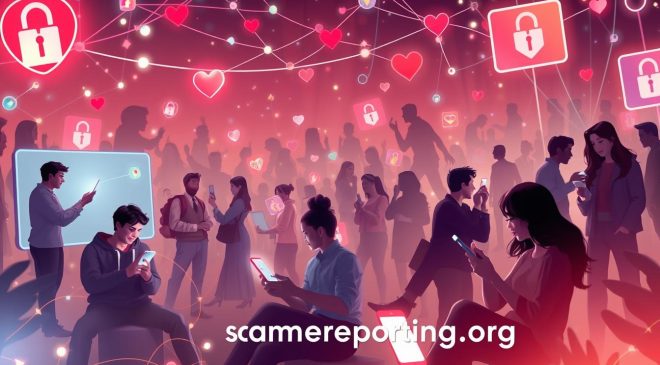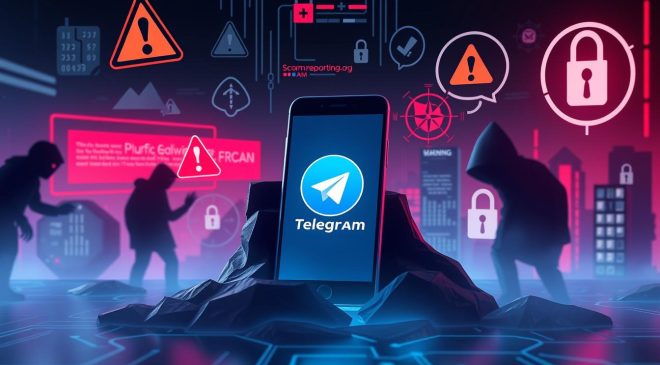
Imagine you’re in charge of a digital ship in the vast cyber ocean. This ship, propelled by the newest Chat GPT AI, aims to improve how you interact online. But as you move forward, cybersecurity dangers hidden below may threaten your journey. Without strong data protection and smart risk handling, you could encounter threats that harm your online chats.
You hold the wheel tightly, knowing Chat GPT’s security isn’t just about tech—it’s about ensuring everyone’s safety and trust. It’s vital to keep AI security tight in a world where talking to machines is normal. The challenge is clear: keep AI interactions safe at all times.
To stay safe, knowledge and good practices are your maps. Understanding cybersecurity helps guard your voyage against new dangers. Each chat and data share highlights the need for a secure online presence. By being alert, you help ensure Chat GPT’s potential is reached safely.
Key Takeaways
- Understanding the potential security risks associated with Chat GPT is the first step to safeguarding your digital interactions.
- Effective cybersecurity strategies must be implemented to protect the integrity of conversational AI platforms.
- Data protection is a critical component of maintaining user trust and ensuring the confidentiality of information.
- Risk management in the realm of AI security involves a proactive approach to recognizing and mitigating potential threats.
- Staying informed on the latest advancements and challenges in Chat GPT security is essential for staying ahead of the curve.
Understanding the Landscape of Chat GPT Security Risk
In our digital world, AI systems are key. It’s vital to know and tackle chat GPT security risks. Cyber experts work hard to protect these systems. These AI chat interfaces are popping up everywhere, raising security concerns.
Let’s dive into Chat GPT, its common weak points, and what happens if chatbot security fails. Knowing these can help you understand why strong cyber protection is needed with advanced AI chats.
Defining Chat GPT and Its Role in Cybersecurity
At its heart, Chat GPT is a smart AI that talks like a human, thanks to huge data training. It uses NLP algorithms to chat, streamline work, and enhance cybersecurity with its ability to spot threats or weird patterns. This could help catch phishers and other cyber threats.
Identifying Common Vulnerabilities in NLP and AI Systems
NLP and AI systems like Chat GPT can have weaknesses. These issues often come from the data they handle. If not protected, sensitive info might leak. Strong login checks are crucial to keep only the right users in touch with the AI. Without tight security, attackers could easily target the system.
Assessing the Impact of Compromised Chatbot Security
A breach in chatbot security can hit organizations hard. They might face money loss, reputational harm, and legal trouble. A hacked AI system could lead to stolen data or sneaky access to secret info. It shows why tight cybersecurity rules are essential to guard against chatbot risks.
Best Practices in AI and Data Protection
AI is changing our world and how we live every day. It’s important to focus on data protection and cybersecurity best practices. These steps help keep our digital world safe and private. With new tech like Chat GPT growing, securing AI systems against hacks is crucial. Let’s look at important ways to make AI systems more secure.
- Regular Security Audits: It’s vital to regularly check your AI systems for any weak spots. Keep doing this to stay ahead of new security threats.
- Data Encryption: Make sure all data is encrypted, whether it’s being stored or sent. This keeps sensitive info safe from hackers.
- Access Controls: Set up strict rules on who can use the AI systems. This ensures only the right people can get in.
Following these steps not only keeps the data safe but also makes sure AI works right. It stops wrong use that could mess up the results. Now, let’s see some specific actions to take:
| Best Practice | Description | Benefits |
|---|---|---|
| User Authentication | Use multiple ways to check who’s trying to access the system before letting them in. | This adds an extra security layer. |
| Principle of Least Privilege | Give users only the access they need for their jobs. | Lowers the chance of inside threats and security leaks. |
| Regular Patch Management | Always update the system with the newest security fixes and software. | Stops hackers from using known weak spots. |
| Incident Response Strategy | Have a plan ready for dealing with security problems if they happen. | Reduces harm from hacks and gets things back to normal faster. |
In the world of AI, being proactive and having strong cybersecurity best practices is key. By adding these measures, your organization’s defense gets stronger. This keeps your data protection strategies solid as AI keeps growing.
In the realm of AI, vigilance is the bedrock of cybersecurity—neglect is simply not an option.
Securing IoT: Lessons for Conversational AI Security
We’re entering a world where everything is connected, including IoT devices and conversational AI like Chat GPT. IoT security is about more than just protecting devices. It covers every part of our digitally connected environment, including AI chatbots.
IoT Security Frameworks Applicable to Chat GPT
IoT security frameworks impact Chat GPT security by focusing on keeping data safe, encrypting info, and checking user identity. Using these ideas in Chat GPT’s design and setup can greatly lower security risks.
Two key frameworks for better Chat GPT security are the NIST Cybersecurity Framework and ISO/IEC 27001. These provide solid advice on risk management and protecting sensitive information.
Design Principles for Secure Chatbot Deployment
Setting up chatbots securely is similar to doing so for IoT devices. Important steps include limiting access, testing thoroughly, and keeping an eye out for any unusual activity.
It’s also critical to use safe coding methods for chatbots, just like for IoT gadgets. Making sure all inputs are checked and cleaned can help minimize the risk of attacks.
Taking lessons from IoT security frameworks and applying them to conversational AI can help us build a safer digital environment. This is key for tech that interacts closely with users and shares data.
The Challenges of On-Device AI: Apple’s Approach
Exploring artificial intelligence reveals a key difference: on-device AI versus cloud-based AI security. Apple’s method for on-device AI introduces unique hurdles and factors. These influence the security of AI and Chat GPT integrations.
Comparing On-Device vs Cloud-Based AI Security Concerns
Choosing on-device AI over cloud-based AI affects user privacy and data security deeply. On-device AI means data is processed right on your device. This offers quicker responses and less need for the internet. But, it’s important to balance these perks with possible device risks.
Cloud-based AI, on the other hand, works on remote servers. This raises issues about data during transit or in the cloud. Figuring out the details of each method is crucial for managing security risks.
On-device AI might be limited by the device’s own power. Cloud-based AI benefits from stronger, more scalable resources. Despite its power, cloud-based AI worries about data being intercepted or stored unsafely. This can make it more vulnerable to cyber threats.
How Apple’s Strategy Affects AI and Chat GPT Security
Apple emphasizes user privacy and security in its on-device AI strategy. It keeps user data on the device, using a secure enclave in its chips. This focus on encrypting data and keeping it on the device supports Apple’s privacy-first outlook. It aims to shield personal information from cloud risks.
| Aspect | On-Device AI Benefits | Cloud-Based AI Benefits |
|---|---|---|
| Data Privacy | Enhanced by localizing data processing | Potentially compromised by reliance on remote servers |
| Processing Capabilities | Limited to device’s hardware | Greater scalability and power |
| Connectivity Dependency | Reduced, functions without continuous internet | High, requires stable internet connection |
| Security Implementation | Controlled by device manufacturer and user | Dependent on third-party cloud providers’ protocols |
Apple’s strategy doesn’t just protect devices. It’s changing the AI field toward decentralized security. As AI and Chat GPT security become ever more crucial, people are paying attention to privacy. Apple’s on-device AI stance is a big move. It combines advanced technology with solid data protection and security principles.
Securing the Edge in AI: Privacy and Cyber Threats
As new technologies grow, it’s clear that strong AI security is needed at the edge of our digital world. The rise of edge computing changes how we handle cybersecurity. It pushes us to protect edge AI areas. This brings up big concerns about privacy and increasing cyber threats for those making and securing these systems.
Edge computing spreads devices out. This creates many possible attack points for bad actors. It’s crucial to have active defense plans. Because edge AI devices handle sensitive data right where it’s gathered, protecting their privacy and security against cyber threats is key. It’s not just about following rules but also about gaining user trust and keeping the system safe.
Given the stakes, the pertinent question arises: How does one effectively armor these intricate networks against a landscape of ever-evolving threats?
- Implement encryption protocols to protect the data in transit and at rest.
- Adopt rigorous authentication processes to verify device and user integrity.
- Conduct regular security audits to identify and rectify vulnerabilities.
Security steps for edge AI must fit within wider cybersecurity plans. This creates a united defense strategy. Using AI security tools that detect and stop cyber threats as they happen is critical now.
| Edge Computing Requirement | Privacy Measures | Cyber Threat Mitigation |
|---|---|---|
| Real-time Data Processing | Strict Access Control Policies | Advanced Intrusion Detection Systems |
| Local Decision Making | Data Minimization Strategies | AI-Powered Threat Intelligence |
| Decentralized Framework | Anonymization Techniques | Distributed Ledger Technologies |
| Low Latency Operations | End-to-End Encryption | Real-Time Security Monitoring |
As we use edge computing for quicker, smarter AI, we must face privacy and cyber threats head-on. This is a path of constant watchfulness, creative solutions, and decisive actions. By making security a core part of edge AI, we protect data, devices, and the future of these groundbreaking technologies.
Chat GPT Security Risk and AI Risk Assessment
As tech advances, the risks grow too. It’s essential to focus on Chat GPT security risk to protect conversational AI. A thorough AI security risk assessment is crucial. Let’s explore advanced risk assessment tools and risk assessment techniques. They help ensure AI’s digital safety.
Tools and Techniques for AI Security Risk Assessment
Diverse tools help secure AI platforms like Chat GPT. Threat modeling predicts risks. Vulnerability scanning checks for security flaws. Penetration testing simulates cyberattacks to find vulnerabilities. These tools are key for a solid AI security risk assessment.

Having many risk assessment techniques helps customize your security plan. Using these techniques well is key to making your AI resilient.
Interpreting Risk Assessment Results for Better Security
Collecting data on security threats is just the start. The real work is in making sense of this data. This involves spotting major threats and acting to prevent them. By interpreting risk assessment results, you can make your AI safer against cyber threats.
In summary, AI system security is an ongoing effort. With top-notch risk assessment tools and improved risk assessment techniques, you can handle the complex world of AI security. Always be alert, stay informed, and most importantly, stay secure.
Encryption and Anonymity in Chat GPT Interactions
Keeping messages safe in digital talks is very important. With new tech like AI and chatbots, keeping things private has become a big deal. Data encryption is key for safe chatbot interactions. At the same time, anonymity and tracking protection are crucial. They keep a user’s identity safe, away from unwanted spying or data collection.
Implementing Data Encryption for Chatbot Conversations
To keep Chat GPT security tight, we must use the best data encryption methods. Encryption changes regular text into something only certain people can read, using special keys. This way, if someone grabs the data while it’s moving, they can’t understand or use it. Here’s a quick look at the important encryption types for chatbot safety:
| Encryption Protocol | Description | Use Case |
|---|---|---|
| SSL/TLS | Secure Sockets Layer/Transport Layer Security | Creating safe internet connections and sending data |
| AES | Advanced Encryption Standard | Encrypting text for safe storage and databases |
| RSA | Rivest-Shamir-Adleman | Safely sending data with different keys |
| Diffie-Hellman | Key exchange algorithm | Letting two sides make a secret key over a risky channel |
Ensuring Anonymity and Tracking Protection for Users
Being able to chat without giving away who you are is just as vital as encryption. In chatbot interactions, staying anonymous helps keep your info safe from misuse. Techniques like pseudonymization, which swaps real names with fake ones, and consent management, giving people control over their data, are key. These actions help lower the chance of being tracked or profiled by outsiders.
Here are some ways to keep user privacy and avoid tracking:
- Pseudonymization: Using fake names instead of real ones to protect user identities
- Consent Management: Letting people decide how their data is used
- No-logs Policy: Not keeping records that could show who a user is
- Tracker Blockers: Using tools to stop outsiders from watching what users do
Bringing data encryption, anonymity, and tracking protection together makes chatting with bots safer. These steps are important for keeping Chat GPT security solid. They help build trust between users and companies. By focusing on these things, we work towards safer and more private talks in the world of conversational AI.
Machine Learning Defenses Against AI Exploits
As tech grows, so do its threats. The battle between AI security and hackers sees the rise of machine learning defenses. These are key to protect systems, like Chat GPT, from AI exploits. Today, strong algorithms that boost Chat GPT security are vital.
- Adversarial Training: This is when a machine learns from fake and real inputs to spot and block attacks. It helps the AI recognize and handle dangers that could harm it.
- Anomaly Detection: Systems need to spot odd things that could mean a security risk. Anomaly detection looks for strange patterns, signaling possible AI attacks.
- Model Explainability: Making AI’s choices clear helps build safer, trusty systems. Explainable models help find weak spots before hackers can use them.
By using these machine learning methods, AI systems get not just stronger but also smarter. They learn to fight threats as they come. This way, companies can keep their data safe from new kinds of digital dangers.
Risk Mitigation Methodologies: Preventing Data Breaches
In today’s world, having strong risk mitigation methods is critical. This is especially true for protecting Chat GPT systems from data breaches. For top-notch data protection, companies need an effective incident response plan. They also need to focus on cybersecurity hygiene and detailed employee training.

Developing a Comprehensive Incident Response Plan
When a data breach hits, acting fast is key. A solid incident response plan acts as a guide. It shows the steps to take for a quick and effective fix.
The plan is built on fast threat detection, stopping breaches, completely removing threats, and getting things back to normal. Making sure everyone knows their part in a crisis will make your company stronger against cyber threats.
Cybersecurity Hygiene and Employee Training
Cybersecurity matters to everyone in a company, not just the IT folks. Regular training for all staff is crucial. It helps them stay sharp on the latest in security and the critical role they play in defense.
Good cybersecurity starts with basic steps like strong passwords and spotting phishing scams. It also includes following all safety protocols. Everyone should be on board with these practices.
Natural Language Processing Security
The rise of conversational AI has made natural language processing security a key issue. This is known as NLP security. It’s important for those making and using it to grasp the challenges and dangers. Strong safety steps are a must to keep trust and guard private info.
NLP security battles include fighting semantic attacks. These are when bad guys use language tricks to fool systems. Another big risk comes from adversarial examples. Here, small tweaks in input can trick the AI. Data poisoning also poses a danger by messing with the training data, which can bias the AI.
To fight these threats, experts must follow the best methods for Chat GPT security.
| Risk Type | Description | Mitigation Strategy |
|---|---|---|
| Semantic Attacks | Exploits the AI’s interpretation of language to produce incorrect responses. | Implement robust contextual understanding and validation checks. |
| Adversarial Examples | Inputs designed to cause the AI to make mistakes. | Utilize adversarial training and regular model updating. |
| Data Poisoning | Intentional manipulation of training data to skew AI decision-making. | Ensure data integrity through careful data source selection and monitoring. |
To defend against these vulnerabilities, being vigilant is key. This means keeping a close watch, using the latest defenses, and always learning about NLP security. It’s crucial to update your strategies as NLP evolves. This way, your Chat GPT systems stay safe from attacks.
Emerging GPT-3 Vulnerabilities and Countermeasures
As more people use GPT-3, the need to understand its GPT-3 security implications grows. This advanced language model is key to Chat GPT security. Its GPT-3 vulnerabilities put users and creators at risk. It’s vital to know these weaknesses and protect systems from attacks. This keeps AI-driven chats safe and secure.
Understanding GPT-3’s Unique Security Implications
GPT-3 can create text that seems human. This is useful but also risky. If hacked, it could send fake messages or misuse information. Understanding GPT-3 vulnerabilities helps protect against these dangers. Securing GPT-3 keeps individual chats and broader AI trust solid.
Developing Countermeasures for GPT-3 Exploits
To defend against GPT-3 threats, it’s crucial to be proactive. Methods like adversarial training make the model resistant to harmful inputs. Regularizing the model prevents it from learning from these bad examples. Cleaning data before it enters GPT-3 helps too. These steps make Chat GPT security stronger. They lower risks and make AI more dependable.
Conclusion
In looking at Chat GPT security risks, we see the need for an interdisciplinary approach. This approach should rely on strong cybersecurity principles. It’s crucial to take measures that fight not just today’s threats but also future ones.
To protect data, you must build solid data protection protocols. You also need to carry out strategic risk management. Discussions about AI don’t stop with creating them. They also include how we use AI safely.
Your role is important. You need to actively work to keep sensitive information safe. By always watching for dangers, you can help stop data leaks. Think about the best practices we’ve talked about. They are inspired by tech leaders like Apple and rules for IoT security.
As AI continues to grow, we face both new challenges and opportunities. You might be working with natural language processing or new GPT-3 developments. Or maybe you’re creating ways to prevent attacks. Your dedication to keeping data safe is crucial. In the complex world of Chat GPT, being informed and careful helps make AI a positive force. We can make our world better and safer together.
FAQ
What is Chat GPT and how is it used in cybersecurity?
Chat GPT is a conversational AI. It talks with users in real-time. In cybersecurity, it helps by answering security questions and providing support. It understands what users ask and gives answers based on what it has learned.
What are the common vulnerabilities in NLP and AI systems that can expose Chat GPT to security risks?
NLP and AI systems face issues like data privacy, and weak authentication. Mismanaged sensitive info or unauthorized access are big concerns. These weaknesses can lead to unauthorized actions, posing risks to Chat GPT systems.
What are the potential consequences and impact of compromised Chat GPT security?
A breach in Chat GPT security can cause big problems. There can be data loss, financial damage, and harm to reputation. It can also lead to legal issues. Such incidents might enable the spread of malware or other cyber attacks.
What best practices can mitigate Chat GPT security risks?
Strong security practices are key to lowering Chat GPT risks. This includes data encryption, controlling access, and timely security checks. Following cybersecurity guidelines and using secure coding are crucial to defend AI systems and data.
What IoT security frameworks are applicable to secure Chat GPT systems?
Frameworks like NIST Cybersecurity and ISO/IEC 27001 help secure Chat GPT systems. These stress on early security measures in chatbot development. This includes safe connections with other systems, ongoing monitoring, and strong authentication.
What design principles should be considered for secure chatbot deployment?
Secure chatbot deployment focuses on minimal privilege, safe coding, and secure system integration. Setting proper access controls and managing user sessions are vital for Chat GPT’s security within the IoT ecosystem.
What are the security concerns related to on-device AI and cloud-based AI?
On-device AI could pose data privacy risks as it stores info locally. Yet, it gives better control over data. Cloud-based AI has its own challenges in data safety but offers more resources. Both approaches come with unique security considerations.
How does Apple’s strategy affect AI and Chat GPT security?
Apple focuses on privacy and security by processing data on the device itself. This step is to limit data exposure and strengthen security. Apple’s strategy supports higher security for AI and Chat GPT through local processing and encryption.
What are the security challenges associated with edge computing in AI systems?
Edge computing brings data privacy issues as data is kept on local devices. Its spread-out nature makes uniform security hard. Physical access to devices also raises risks.
What tools and techniques are used for AI security risk assessment?
For assessing AI security risks, tools like threat modeling, vulnerability scanning, and penetration testing are used. They help spot potential risks, weaknesses in the system, and test the system’s defenses against attacks.
How can risk assessment results be interpreted to enhance Chat GPT security?
By analyzing risk assessment findings, specific risks to Chat GPT can be spotted and tackled. Organizations can patch software, tweak security, and adopt new encryption methods. This proactive approach helps fortify Chat GPT against threats.
How can data encryption techniques ensure the confidentiality and integrity of chatbot conversations?
Using encryption protects chatbot chats from being intercepted or tampered with. It secures messages whether stored or in transit. Proper key management and secure channels keep conversations safe and private.
What measures can be taken to ensure anonymity and tracking protection for users in Chat GPT interactions?
Anonymity and tracking protection can be ensured through pseudonymization and consent management. This reduces identification risks. Consent management empowers users to control their data and opt out of tracking.
What machine learning defenses can be employed to mitigate AI exploits in Chat GPT?
Defenses like adversarial training, anomaly detection, and model understanding can protect Chat GPT. They make the AI tougher against attacks, find odd behavior, and help recognize harmful inputs.
Why is developing a comprehensive incident response plan important for handling data breaches in Chat GPT systems?
Having an incident response plan is crucial for quick and effective action after a breach. It helps manage the damage and get operations back to normal. The plan covers detection, containment, removal, and recovery.
How does cybersecurity hygiene and employee training prevent data breaches in Chat GPT systems?
Keeping programs updated and using strong passwords helps avoid breaches. Training staff on security awareness makes sure everyone knows how to maintain safe systems. This combined approach strengthens Chat GPT’s defenses.
What are the security challenges and vulnerabilities specific to natural language processing (NLP) in Chat GPT systems?
Chat GPT faces risks like semantic attacks, where language use can trick the AI. Adversarial examples and data poisoning can also harm its performance and safety. These issues need careful attention.
What are the unique security implications of GPT-3 in Chat GPT systems?
GPT-3’s advanced abilities bring new security challenges. Its large size may hide biases and spread wrong information. Understanding these issues is vital for protecting Chat GPT systems.
How can countermeasures be developed to mitigate GPT-3 exploits in Chat GPT systems?
To counter GPT-3 exploits, measures like adversarial training, model control, and cleaning inputs are needed. These steps make the model more secure and less prone to attacks by filtering out harmful inputs.
Source Links
- https://medium.com/@asadajmerwala1/iphone-ai-features-could-be-faster-but-less-powerful-than-chatgpt-and-gemini-report-71480168e416
- https://avxhm.se/ebooks/178862582X1.html
- https://www.techradar.com/computing/artificial-intelligence/google-might-have-a-new-ai-powered-password-generating-trick-up-its-sleeve-but-can-gemini-keep-your-secrets-safe


